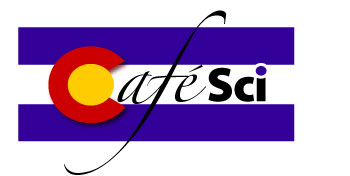"Are we alone?" is one of the key unanswered questions of humankind. The more we understand the fragility of our own life-supporting world the harder it is to believe life could exist elsewhere, but there is hope. As crazy as it sounds we know that life does find a way, we see life in the harshest of Earth's environments and so maybe life could be elsewhere too. The liquid water oceans underneath ice surfaces on moons across our solar system might be the answer. These regions have access to heat, liquid water and the complex chemistry all needed for life. So maybe these dark, distant, icy worlds are our best hope for finding life. We will explore these different worlds, along with missions currently selected (or being planned) to explore them.
 Dr. Carly Howett is the Assistant Director of the Department of Space Studies at the Southwest Research Institute in Boulder, Colorado. She is mainly interested in the surface properties of icy worlds, including Saturn’s icy moons, Jupiter’s Trojan asteroids, Europa, Pluto and Charon. She is the Deputy Principal Investigator of the Ralph Instrument on New Horizons, an Instrument Scientist on NASA’s newly selected Lucy mission and a Co-Investigator on two other NASA missions: Cassini and Europa Clipper.
Dr. Carly Howett is the Assistant Director of the Department of Space Studies at the Southwest Research Institute in Boulder, Colorado. She is mainly interested in the surface properties of icy worlds, including Saturn’s icy moons, Jupiter’s Trojan asteroids, Europa, Pluto and Charon. She is the Deputy Principal Investigator of the Ralph Instrument on New Horizons, an Instrument Scientist on NASA’s newly selected Lucy mission and a Co-Investigator on two other NASA missions: Cassini and Europa Clipper.
On Cassini she was responsible for planning CIRS observations of Saturn’s icy moons, and analyzing the returned data. Carly has discovered thermal anomalies dubbed “Pac-Men” on three of Saturn’s icy moons, and helped constrain active Enceladus’ heat flow. While on New Horizons she works on planning observations, calibrating Ralph’s MVIC instrument and analyzing results. She assisted with the production of color images of Pluto and Charon.
NASA’s Lucy and Europa Clipper missions are still in the instrument development stages. As such, Dr. Howett is heavily involved in optimizing instrument design and build for the upcoming missions to a Jovian Trojan asteroid and Jupiter’s icy moon Europa respectively.

 Dr. Carly Howett is the Assistant Director of the Department of Space Studies at the Southwest Research Institute in Boulder, Colorado. She is mainly interested in the surface properties of icy worlds, including Saturn’s icy moons, Jupiter’s Trojan asteroids, Europa, Pluto and Charon. She is the Deputy Principal Investigator of the Ralph Instrument on New Horizons, an Instrument Scientist on NASA’s newly selected Lucy mission and a Co-Investigator on two other NASA missions: Cassini and Europa Clipper.
Dr. Carly Howett is the Assistant Director of the Department of Space Studies at the Southwest Research Institute in Boulder, Colorado. She is mainly interested in the surface properties of icy worlds, including Saturn’s icy moons, Jupiter’s Trojan asteroids, Europa, Pluto and Charon. She is the Deputy Principal Investigator of the Ralph Instrument on New Horizons, an Instrument Scientist on NASA’s newly selected Lucy mission and a Co-Investigator on two other NASA missions: Cassini and Europa Clipper.